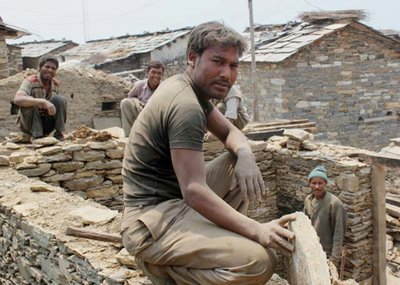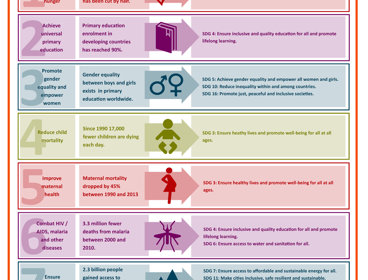Her research examines gender, work and social transformation in South Asia. Jane has spent the past 12 years working with rural communities in the Indian Himalayas. We spoke to her about some of her most recent work, part of which involved creating a short documentary: Lifelines.
Who exactly are the ‘Educated unemployed’?
In the context in which I work, the ‘educated unemployed’ are a new generation of young people (aged roughly 16-35) who have completed at least a high school education or more, but have been unable to convert those qualifications into meaningful employment. We tend to lump the ‘educated underemployed’ into the same category – that is, educated young people who have some form of low-paid employment that does not reflect their educated status. Despite earning some money, these young people see themselves as unemployed, waiting for what they consider more appropriate employment within a business environment that suits their skill levels.
I work in Uttarakhand, in the Indian Himalayas, where education is a very new part of growing up. Most of the parents of young people are illiterate or have completed just a few years of primary school. Some of the fathers may have worked for the state (particularly in the army), but the majority of parents have spent their life farming, mostly on a subsistence basis. So in these areas, the notion of being ‘educated unemployed’ is a new one, and with it comes tension and frustration both within and between generations.
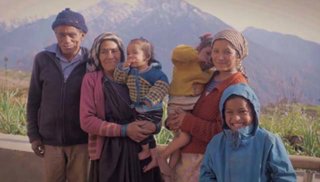
A family in Uttarakhand, in the Indian Himalayas (Source: Still from Lifelines)
What made you choose South Asia as your focus area?
South Asia is currently seeing a huge rise in the numbers of people enrolled in formal education, while also experiencing a ‘youth bulge’. For example, in India, over 50% of the population is now under 25 years. Meanwhile, the employment opportunities have not kept up with these changes, so the problem of young people being ‘educated unemployed’ is prevalent.
Our project examines the politics of educated unemployed youth in India, Sri Lanka and Nepal. These countries in South Asia offer similarities in terms of their recent and widespread engagement with education. But they also differ widely, for example in the extent of state investment in education and employment, in their histories of conflict, and in their patterns of out-migration. Studying these three different contexts sheds light on parallels and discrepancies.
Why do you think the voice of youth is so hidden and marginalised globally?
Youth tend not to have the resources, connections or power to be heard. They may be marginalised by their perceived lack of adult status, often measured by indicators such as employment, marriage, or establishing a family. As more and more youth struggle to achieve these milestones, however, it may be becoming harder for young people to make themselves heard through the conventional channels.
But new technologies are beginning to change that. Young people are increasingly connected and able to share information, advice and ideas. Technology is perhaps particularly important for the most marginalised – for example, for women, the poorest and the low castes – for whom new channels of communication have been opened up.
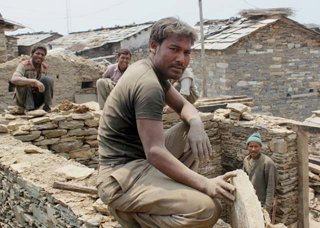
An Indian labourer forced to work in the informal sector through a lack of opportunities (Source: Jane Dyson)
What are the key factors that have created a society that educates but cannot provide jobs?
The economic liberalisation of India in the early 1990s was followed by a period of rapid economic growth that was not associated with a rise in employment opportunities. Many of the new industries, for example the boom in IT, depended on a very small, educated labour force. Alongside this relatively ‘jobless growth’ in the private sector, the state made no investment in increasing employment opportunities.
At the same time, there has been a rise in the provision of state and private education. But the education is often of very poor quality, and the proportions of young people completing higher education remains low at just under 20%. So, we are seeing a growing number of people employed in an insecure and poorly paid informal economy. The nature of the informal economy means it is difficult to put a figure on this but it is estimated that over 90% of young people, who are not in education in India are employed informally.
What stops educated youth from becoming entrepreneurs in their own right?
The young people where I work, in the Indian Himalayas, tend not to have the money or the social contacts that they need to establish themselves. These newly educated youth come from a remote, agrarian economy, which until recently, was also entirely based on subsistence farming. Building up significant capital is extremely difficult. People are unable, or reluctant to take loans that they may not be able to repay, and so lack the means to invest in new businesses. Further, because of the remote nature of the area, the young people do not have social connections in urban centres where business opportunities are more prevalent.
Nevertheless, some young people have become small-scale entrepreneurs, perhaps by opening a small shop in the village or buying a mule to serve the local transport trade. These remain volatile occupations with high risk, however, and are not always long lasting.
What form does ‘youth politics’ take in India and how does it differ from the UK?
Youth politics takes many forms in India. In urban centres, particularly those with institutions of higher education, young people are often highly involved in party politics, setting up youth wings of the main political parties. Much of this type of politics can be seen as ‘allocative’, as individuals or parties compete for power. But many young people are disillusioned with this type of politics, particularly by its associations with corruption. Instead, they make a case for engaging in campaigns in their local community. For example, where I work, a newly educated generation of technologically savvy youth spearheaded successful movements to ensure state provision of electricity, schools and the building of a new road. We have termed this type of politics, used to maintain and create public goods, ‘generative politics’.
This very localised approach means that young people in India can perhaps achieve more immediate results than youth politicians in the UK. India is still a relatively new democracy, where people believe in the idea of the state as provider, and in many cases, are able successfully to campaign for public goods.
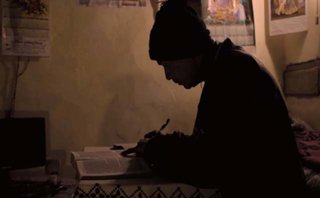
Studying continues even after the day’s work is done. (Source: Still from Lifelines)
If we were to leap forward 20 years, to a new generation of ‘youth’, how might their experience of education, employment and politics have changed compared to that of their parents?
In the remote region where I work, today’s generation of youth are the first to be educated to this level, so for most, their parents are illiterate or have completed just a few years of primary school. This means that many young people have had to convince their sometimes-sceptical parents of the value of education in the employment market. Parents are unable to advise their children, and are often unsure how much education they should invest in to maximise their children’s chances of future success.
The next generation of youth will not experience this generational disjuncture in education levels and employment strategies. The future parents are already educated, and believers in the power of education. They will prioritise their children’s learning over their contribution to household work, for example, and encourage them to seek salaried employment rather than continuing in the agrarian economy. There is no guarantee that the employment market will be any better than it is today, but there may be a closer overlap in the aspirations of generations.
How has your research changed your own perceptions of youth?
Youth politics around the world is often stereotyped as violent, anomic, and ultimately, fruitless. Our research, however, has shown that youth are often quietly involved in barely visible but very productive types of politics. They are not the destructive, hot-headed youths that the media would have us believe. But at the same time, they are also perhaps not the ‘alchemists of the revolution’ that others might hope for. Many of the youth with whom we work are inherently quite conservative. While they are campaigning for public goods, advising their peers or mediating in social conflicts, they may simultaneously be maintaining class and gender inequalities.
Links
Jane was interviewed in October 2014.
